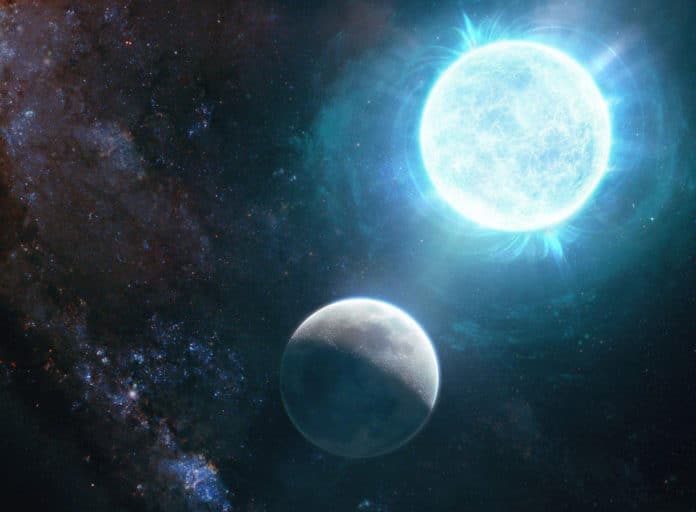Astronomers have recently discovered an incredibly dense white dwarf: about the size of a moon with a mass similar to the Sun. This newly discovered white dwarf is the smallest and most massive white dwarf ever seen, 130 light-years away. Its age is estimated to be approximately 100 million years old or less.
It sounds illogical, but smaller white dwarfs happen to be more massive. The reason may be deficient nuclear burning that keeps up normal stars against gravity, and their size is instead regulated by quantum mechanics.
This smallest white dwarf is known as ZTF J1901+1458. It has an extreme magnetic field almost 1 billion times stronger than our Sun’s. What’s more, it whips around on its axis at a frenzied pace of one revolution every seven minutes.
Ilaria Caiazzo, the Sherman Fairchild Postdoctoral Scholar Research Associate in Theoretical Astrophysics at Caltech, said, “We caught this fascinating object that wasn’t quite massive enough to explode. We are truly probing how massive a white dwarf can be.”
Many stars in the universe orbit around each other in pairs. The stars grow old together, and if they are both less than eight solar masses, they will both evolve into white dwarfs.
This new study offers a clue on the next step after this phase: The pair of white dwarfs, which spiral around each other, lose energy in the form of gravitational waves and ultimately merge. If the dead stars are massive enough, they explode and form a supernova.
However, if they lack specified mass, they form a dense white dwarf. This process of merging boosts the magnetic field of that star and speeds up its rotation compared to that of the progenitors.
According to astronomers, the merged white dwarf may be massive enough to evolve into a neutron star.
Caiazzo said, “This is highly speculative, but the white dwarf may be massive enough to further collapse into a neutron star. It is so massive and dense that, in its core, electrons are being captured by protons in nuclei to form neutrons. Because the pressure from electrons pushes against the force of gravity, keeping the star intact, the core collapses when a large enough number of electrons are removed.”
In the future, Caiazzo hopes to use ZTF to find more white dwarfs like this one and, in general, to study the population as a whole.
Journal Reference:
- Caiazzo, I., Burdge, K.B., Fuller, J. et al. A highly magnetized and rapidly rotating white dwarf as small as the Moon. Nature 595, 39–42 (2021). DOI: 10.1038/s41586-021-03615-y
